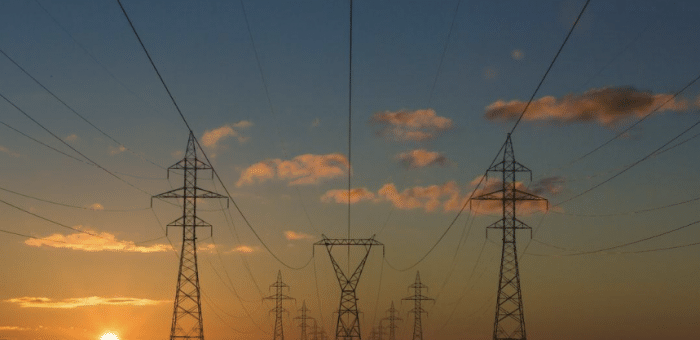Let’s be honest. Paying monthly bills isn’t something that anyone can avoid. However, opening your energy bill, often your most expensive utility expense, only to discover your costs have drastically increased is more than just frustrating.
Power Wizard is here to help. We can find you the best electricity plans with the lowest rates, keeping your monthly energy costs lower.
Let us find you the best electricity plan in seconds and start saving.
Your current energy plan may not be the only culprit behind your more expensive Texas electric bills. As it turns out, several factors can lead to sudden (and seemingly mysterious) increases. Getting to the root of the cause can help you take action and get your electricity costs back under control.
Your next steps after seeing a Texas electric bill increase
Opening your Texas electric bill to find a significantly higher amount due than the previous months can be quite a shock. Once you get over the initial surprise, it’s time to do some digging.
Here’s what you need to do to uncover the cause behind your electric bill increase:
1. Identify the culprit
Increases in electricity costs are often the result of increased energy consumption. In other words, your home drew a lot of power during the month in question, even if you didn’t realize it. There are a couple of common reasons for this:
Let us find you the best electricity plan in seconds and start saving.
Increase in electricity due to extreme weather
Texas summers are hot. During this time of year, your air conditioner is likely running more often to keep you cool. Even with a low fixed-rate plan, you might expect to see some increases in your electricity. However, a period of extreme heat can drive your prices even higher.
Extreme weather in winter can have a similar effect. The colder it gets, the more your heater runs to keep your home warm.
Energy customers with variable-rate plans are likely to see more drastic increases in their electric bills during periods of extreme weather. Not only are you using more electricity, but rates are also more likely to increase with demand. Weather-related issues that impact the electricity grid, such as the winter storm in early 2021, can also significantly impact electricity rates and your monthly costs.
More electric utilities and outlets utilized for appliances
Let us find you the best electricity plan in seconds and start saving.
Take a look around your home for a moment. How many devices do you have plugged into wall sockets or power strips? If you’ve added more electronics to your outlets, and you leave them plugged in, there’s a good chance you’re drawing more electricity than usual. Even when you aren’t using these devices, they may still be causing vampire energy drain, which means you’re paying more for electricity you aren’t technically using.
A home energy monitor can help you track your power consumption. Some whole home monitors, which connect to your circuit box, can give you a better picture of what appliances use the most electricity. Alternatively, you can use a plug-in monitor to check the draw of individual devices. An added benefit of these monitors is that they can help you identify potential issues with your home appliances and address them before they become more significant (and expensive) problems.
You can also use smart power strips and plugs to help reduce vampire energy drain. These high-tech tools sense when plugged-in electronics go into standby mode and cut the flow of electricity to them. You can also control them using an app or your smart home assistant.
2. Ensure your electric rates haven’t changed
As you review your current power bill, look at your energy rate (your price per kWh). Is it higher than it was in previous months? There are a few reasons this might happen.
Let us find you the best electricity plan in seconds and start saving.
If you have a variable-rate plan, your rate can fluctuate from month to month. As mentioned earlier, increased demand on the power grid, which typically happens during the summer, can trigger a jump in your price per kilowatt-hour (kWh).
Generally, a fixed-rate plan can help you avoid the effects of increasing energy prices. However, if your contract recently ended, and you didn’t renew or enroll in a new plan, your energy provider may automatically switch you to a variable-rate plan. If your electric provider does this, they’ll have the information in their terms of service.
A significant increase may also occur if you have a plan with tiered rates (such as a bill credit plan). These plans typically advertise their lowest possible rates, but your electricity consumption must fall within a specific range to obtain them. Using even slightly more or less could impact your price per kWh.
3. Review your bill side-by-side with previous months
Pull up your energy bills from the last few months and compare them to your current statement. That can make it easier to detect differences or identify trends. Has your energy consumption increased over time? What about your rates?
Let us find you the best electricity plan in seconds and start saving.
Don’t forget about the other charges that make up your electricity costs. While the exact fees vary between energy companies, your bills may include:
- A base charge: A flat fee many electricity companies charge all of their customers
- Delivery charges: This fee consists of a flat fee and a price per kWh and is subject to change throughout the year
- PUC assessments: A charge assessed by the Public Utility Commission to recover the costs of administering the Public Utility Regulatory Act
- State and local taxes: You may pay tax on your electricity charges as well as your delivery charges
You may also find it helpful to locate your plan’s electricity facts label (EFL), a document that discloses information regarding your energy prices, contract details, and additional fees. Essentially, it breaks down how an energy provider charges for your electricity usage. It can also help you identify (and rectify) potential discrepancies.
4. Contact your energy provider and ask for further information
If you still can’t identify the cause of your electric bill increase, reach out to your energy provider. The company may be able to offer more insight. Sometimes, mistakes happen. Reputable power companies will likely be willing to help correct the issue.
Let us find you the best electricity plan in seconds and start saving.
You should also reach out immediately, if you find fees on your bill that you weren’t expecting to be there. By law, electric providers must disclose all charges on their EFLs. However, some try to sneak hidden charges into your total due (a practice known as “slamming”), which you can dispute. Power Wizard can help you avoid this hassle by protecting you from providers with gimmicky plans and hidden fees.
Ask for proof of your consent to these additional charges, if your energy provider insists you gave it. Meanwhile, continue paying the undisputed amount on time. You can file a formal complaint, too, if the company can’t furnish the requested proof.
5. Consider switching to a new electric company or energy contract
The energy plan that keeps your neighbor’s bills low isn’t necessarily going to do the same for you. Your energy needs and consumption habits are unique to you. It may be time to consider switching to a different type of energy plan or provider.
Let us find you the best electricity plan in seconds and start saving.
Fortunately, you don’t have to find a new plan alone. With Power Wizard by your side, that process has never been easier.
Receive the cheapest electrical rates in Texas with Power Wizard
Your electricity may be one of your most expensive utilities, but that doesn’t mean you have to suffer sudden and drastic increases in your costs. The right plan can make all the difference, and Power Wizard can help you find it. You provide your zip code and answer some questions regarding your home and lifestyle. The algorithm would then generate a list of options based on your unique needs. It’s really that easy.
If you’re ready to find the best plans with the cheapest rates, visit Power Wizard to get started today!
Let us find you the best electricity plan in seconds and start saving.


